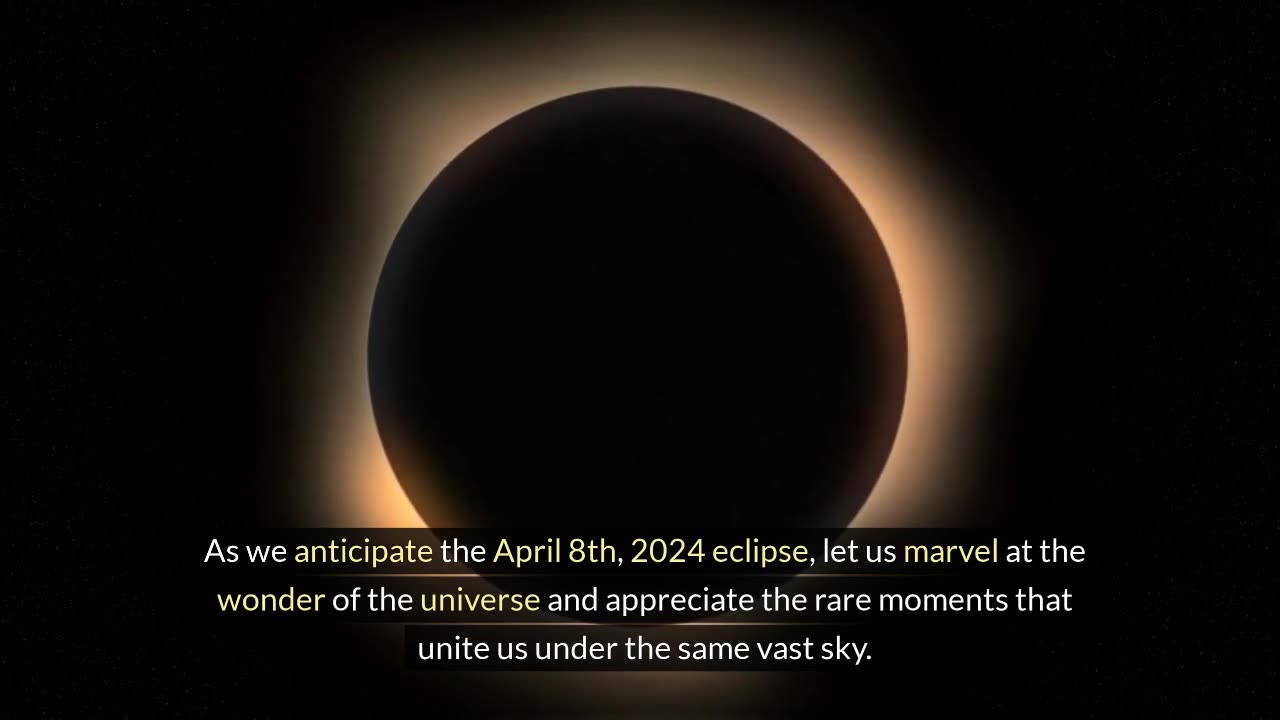Premium Only Content

Total Eclipse vs Partial Eclipse - What's the Difference Anyway??
ECLIPSE MERCH AVAILABLE: https://totaleclipse2024.curatedspot.com/products/bestsellingshirts
Eclipses, those rare cosmic events, offer captivating displays of nature's grandeur. Among them, partial and total eclipses stand out, each offering unique experiences.
During a partial eclipse, the moon partially covers the sun, leading to a subtle dimming of sunlight. It's a reminder of the celestial ballet unfolding above us, showcasing the harmonious interplay of celestial bodies.
In contrast, a total eclipse is unparalleled. As the moon perfectly aligns between the Earth and the sun, it casts a shadow, known as the umbra, onto the Earth's surface. Lucky viewers within this shadow experience totality, witnessing the sun completely obscured by the moon. During this brief but breathtaking moment, the sky darkens to twilight hues, revealing stars and planets usually hidden by the sun's brilliance. Birds may roost, temperatures drop, and an otherworldly stillness envelops the landscape.
The upcoming April 8th, 2024 total eclipse promises to be exceptional. It will traverse a path across North America, offering millions the opportunity to witness totality. Cities like Dallas, Indianapolis, and Buffalo will experience complete obscuration of the sun, providing a rare opportunity for residents and travelers alike. Furthermore, advancements in technology and social media mean that this eclipse will be more accessible and widely observed than ever before.
While both partial and total eclipses offer glimpses into the cosmic dance, the experience of totality is incomparable. As we anticipate the April 8th, 2024 eclipse, let us marvel at the wonder of the universe and appreciate the rare moments that unite us under the same vast sky.
ECLIPSE MERCH AVAILABLE: https://totaleclipse2024.curatedspot.com/products/bestsellingshirts
-
 1:44:14
1:44:14
Glenn Greenwald
5 hours agoRubio's Shift: What is Trump's Foreign Policy? Trump/Musk Attack CIA Fronts USAID & NED: With Mike Benz | SYSTEM UPDATE #401
28.8K25 -
 1:05:47
1:05:47
Donald Trump Jr.
7 hours agoMexico Sends Troops to Border, Plus USAid Scam Exposed, Live with Brooke Goldstein & Rep Brian Mast | TRIGGERED Ep.213
138K113 -
 LIVE
LIVE
Flyover Conservatives
20 hours agoDR. KIRK ELLIOTT | Deep Dive: Tariffs, Tech, and Total Economic Warfare – Who Wins and Who Loses? | In Studio - FOC Show
348 watching -
 LIVE
LIVE
Danny Polishchuk
5 hours agoTariffs and Trade Wars + Nick Rochefort | Low Value Mail #136
424 watching -
 54:43
54:43
Kimberly Guilfoyle
7 hours agoThe Trump Effect: Mexico Folds, Live with Dinesh D’Souza & Chuck DeVore | Ep.193
65.6K30 -
 1:20:47
1:20:47
Redacted News
5 hours agoMexico CAVES to Trump over tariffs, USAID Shutdown, & Zelensky loses $200 billion | Redacted Live
143K379 -
 1:02:29
1:02:29
The StoneZONE with Roger Stone
2 hours agoIs GOP Sen. Bill Cassidy Playing Politics with RFK Jr. Vote as U.S. Faces Public Health Crisis?
3.88K -
 1:10:30
1:10:30
BIG NEM
5 hours ago📢 THE JOLLOF-OFF: The Battle for West African Cuisine! 🇳🇬🔥🇬🇭
1.92K4 -
 54:58
54:58
LFA TV
1 day agoThe Trade War Begins | TRUMPET DAILY 2.3.25 7pm
20.6K27 -
 11:08
11:08
Tundra Tactical
5 hours ago $0.44 earnedDead Air Silencers 10 YEARS of INNOVATION!
10.3K1